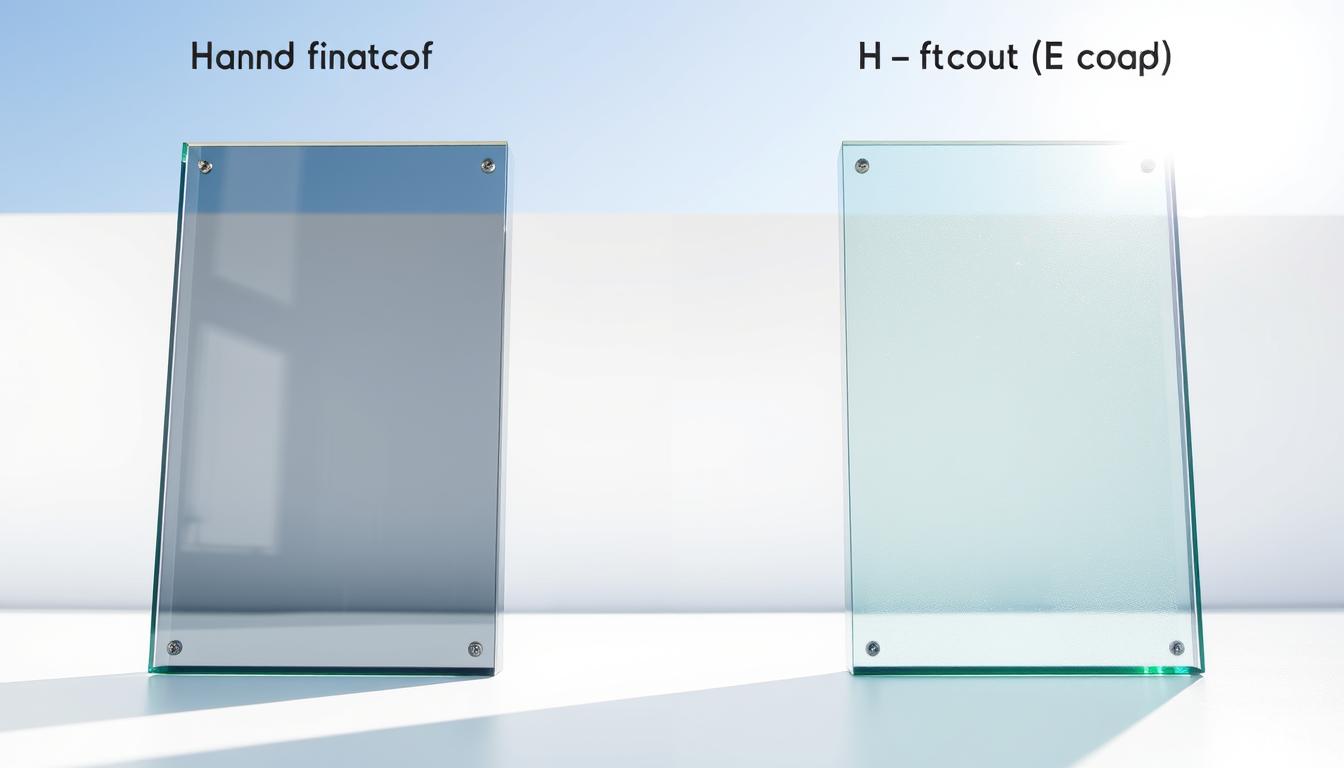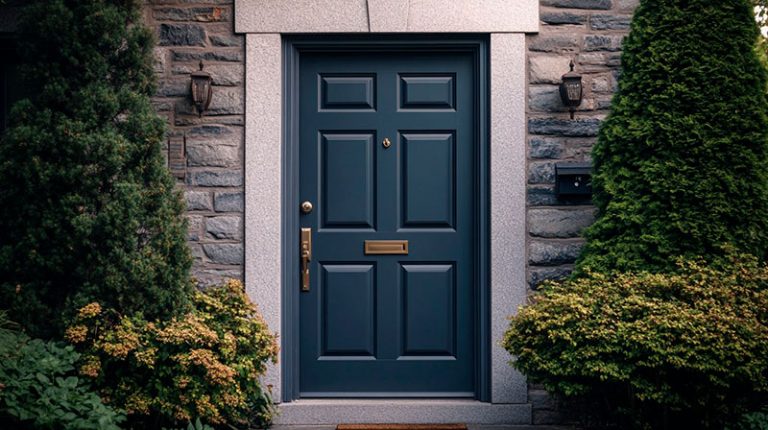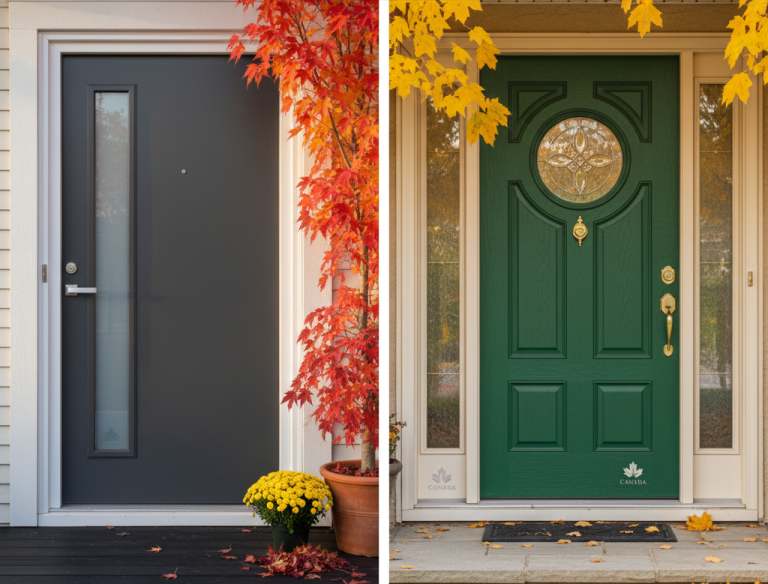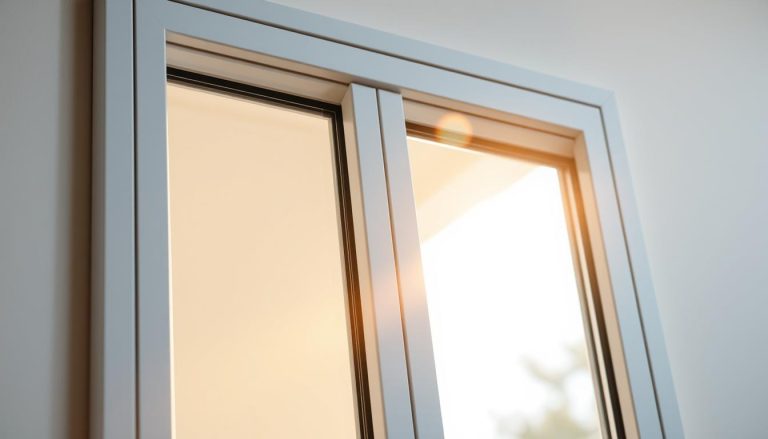Low-E glass coatings have changed how we keep our homes warm and cool. They help cut down on the need for heating and cooling. Companies like Total Home Windows & Doors in the Greater Toronto Area use this tech. They use Total Seal technology and UltraSlim Series windows.
Looking into Low-E glass shows us how important it is to know the differences. This knowledge helps us make better choices when designing buildings.
Key Takeaways
- Low-E glass reduces heat transfer, improving energy efficiency.
- Total Home Windows & Doors uses advanced technologies like Total Seal and UltraSlim Series.
- The benefits of Low-E glass include minimized heating and cooling needs.
- Understanding Low-E glass types is key for building design decisions.
- Low-E glass is a big step forward in building technology.
Window Replacement Near Me
Understanding Low-E Glass Technologies
Low-E glass technology is key in making homes and buildings energy-efficient. It helps people choose the right windows for their needs.
Low-E glass reflects heat, not absorbs it. This is thanks to thin, metallic coatings on the glass. These coatings are almost invisible but very important for saving energy.
Modern windows, like those from Total Home Windows & Doors, use advanced tech. This tech includes Total Seal and integrated lock points. It makes windows more secure and energy-efficient.
Key Features of Low-E Glass
- Minimizes heat transfer
- Reduces energy consumption
- Provides UV protection
- Enhances window durability
Let’s look at how Low-E glass compares to standard glass.
| Feature | Standard Glass | Low-E Glass |
|---|---|---|
| Heat Transfer | High | Low |
| Energy Efficiency | Low | High |
| UV Protection | Limited | High |
The table shows Low-E glass is better than standard glass. It’s great for energy-saving windows. Using Low-E glass can lower your energy bills and make your home more comfortable.
Choosing Low-E glass for your windows is a smart move. It offers long-term benefits and helps the environment.
Find related services
Hard Coated Low-E Glass Explained
The making of hard coat Low-E glass starts with a hot glass from the furnace. Then, a coating is applied. This makes the glass strong.
Hard coat Low-E glass has its own making process. Knowing this helps us choose when to use it in windows.
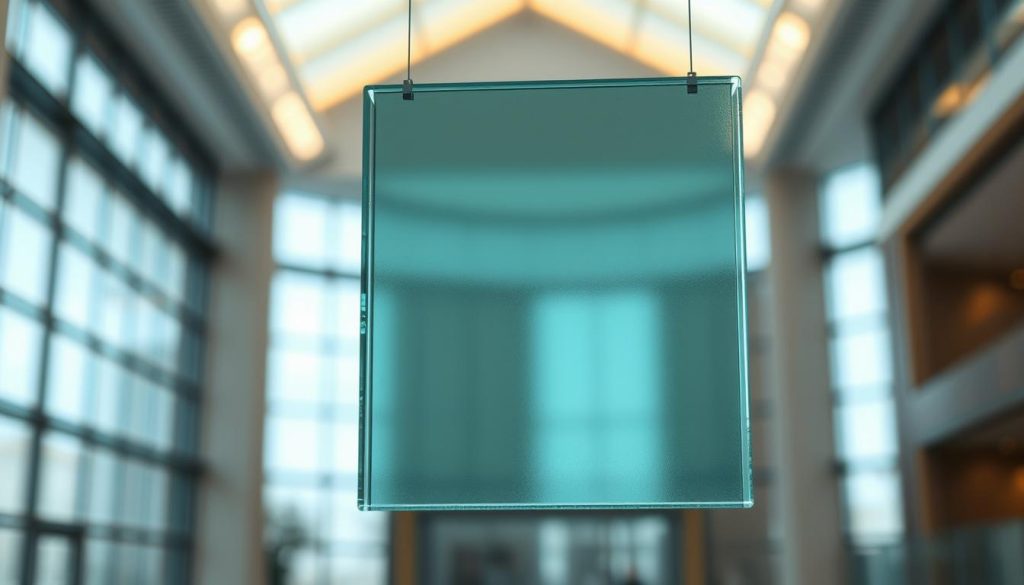
When picking hard coat Low-E glass for windows, think about a few things:
- Durability: It’s tough and can handle many weather conditions.
- Energy Efficiency: It cuts down on heat transfer, saving energy.
- Compatibility: Make sure it works well with your window system.
Knowing the good points of hard coat Low-E glass helps us decide. We balance its strength, energy saving, and cost in our windows.
Find related products
Soft Coated Low-E Glass Explained
Soft coated Low-E glass is made after the glass cools down. A coating is applied to the glass. This makes the glass more efficient at keeping energy in or out.
Soft coat Low-E glass gets a special coating after it cools. This coating helps the glass reflect heat. It keeps your home cooler in summer and warmer in winter.
Considerations for Soft Coat Low-E Glass
When picking soft coat Low-E glass, think about a few things. The type of Low-E glass affects your windows’ energy use and how well they work.
| Feature | Soft Coat Low-E Glass | Hard Coat Low-E Glass |
|---|---|---|
| Manufacturing Process | Coating applied after glass cools | Coating applied during glass production |
| Energy Efficiency | High | Moderate to High |
| Cost | Generally more expensive | Less expensive |
Choosing the right Low-E glass is key. Companies like Total Home Windows & Doors use new tech. This shows how important it is to pick the right glass for your needs.

Soft coat Low-E glass has its own benefits and things to think about. Knowing these differences helps you pick the best Low-E glass. This ensures your windows work well and save energy.
Key Differences Between Hard and Soft Coated Low-E Glass
It’s important for homeowners and builders to know the difference between hard and soft coated Low-E glass. These differences affect how well the glass saves energy and lasts over time.
Hard coated Low-E glass is made when the glass is hot. This makes the coating last longer and not wear off easily.

Soft coated Low-E glass is made in a vacuum chamber after the glass is cut. This method lets the coating be more precise, making it better at saving energy.
Performance Characteristics
- Durability: Hard coat Low-E glass lasts longer and can handle harsh conditions better.
- Energy Efficiency: Soft coat Low-E glass saves more energy because it has a lower emissivity. This means less heat moves between inside and outside.
- Cost: Making hard coat Low-E glass is cheaper than soft coat. This affects the price of the windows.
When choosing between hard and soft coated Low-E glass, think about your project’s needs. Consider your budget, the climate, and how much energy you want to save. Knowing these differences helps you choose the best option for your needs.
Choosing the Right Low-E Glass for Your Home
To make your home more energy efficient, it’s key to know the difference between hard and soft coated Low-E glass. The right choice depends on your local weather, your windows’ direction, and how much energy you want to save.
In cold places, soft coated Low-E glass is better because it keeps heat in. It makes your home warmer in winter. But in hot places, hard coated Low-E glass is better. It keeps your home cooler in summer.
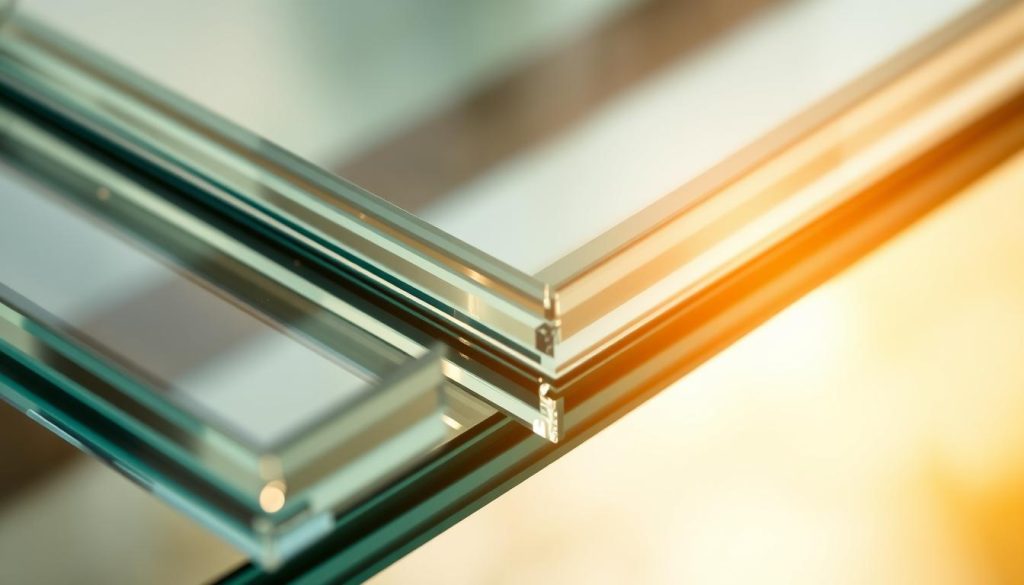
Also, think about your windows’ direction. South-facing windows get more sun than north-facing ones. Using Low-E glass with a lower SHGC can help keep your home cooler in summer.
Comparison of Hard Coat and Soft Coat Low-E Glass
| Feature | Hard Coat Low-E Glass | Soft Coat Low-E Glass |
|---|---|---|
| Durability | More durable, suitable for monolithic applications | Less durable, typically used in insulated glass units |
| Energy Efficiency | Moderate energy efficiency | Higher energy efficiency |
| Cost | Generally less expensive | Typically more expensive |
At Total Home Windows & Doors, we use the latest tech like UltraSlim Series windows. We know how important the right windows are for saving energy. By picking the right Low-E glass for your home, you can make it more energy efficient and comfortable.
Low e glass has many benefits. It uses less energy, lowers your bills, and makes your home more comfortable. Knowing the difference between hard and soft coated Low-E glass helps you choose the best for your needs.
Conclusion: Making the Right Decision for Your Windows
Understanding the differences between hard coat and soft coat Low-E glass is key. Our comparison helps homeowners and builders choose the best option. This choice depends on their specific needs.
Total Home Windows & Doors leads in window manufacturing. This shows the value of staying updated with Low-E glass technology. The right choice can make homes more energy-efficient and comfortable.
When looking at Low-E glass options, think about your project’s needs. Consider the climate, budget, and energy efficiency level you want. This way, you can pick the best Low-E glass for your project.

